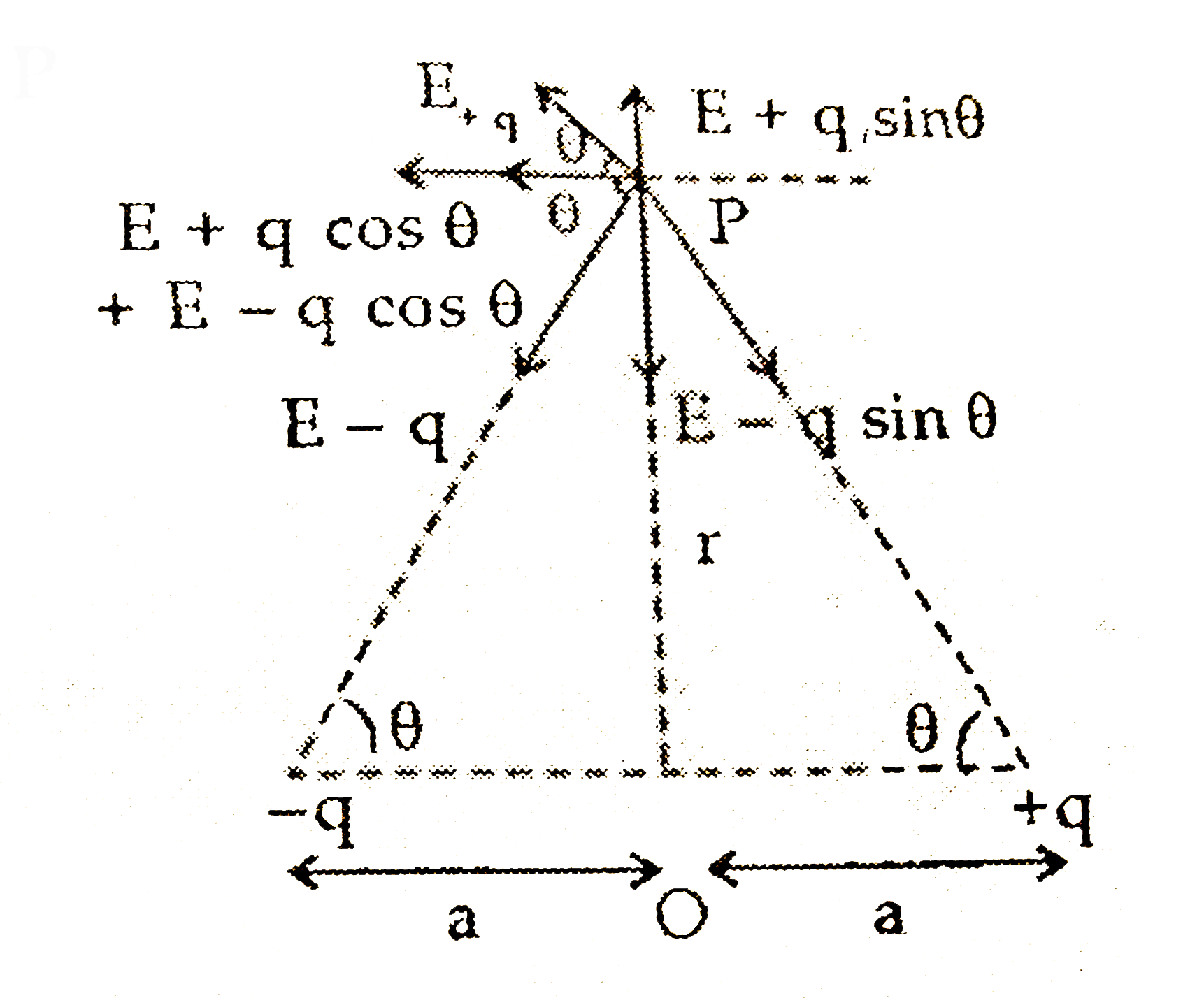(a) Derive and expression for the electric field at any point on the equatorial line of an electric dipole.
(b) Two identical point charges, q each kept 2m apart in air. A third point charge Q of unknown magnitude and sign is placed on the line joining the charges such that the system remains in equilibrium. Find the position and nature of Q.
(a) Electric field intensity at point P due to + ve q charge at point P

Electric field intensity at point P due to - ve q charge at point P
are equal in magnitude and oppsite in direction so they cancel out.
Net electric field at point P
Where P is electric dipole monent
(b) As charge is in equilibrium net force on the charge is zero

Hence, Q is at the mid point of the line joining the charge q and q.
as the whole system is also in equilibrium, force an the charge q must also be zero.
Similar Questions
Deive an expression for the electric field at any point on the equatorial line of an electric dipole.
View SolutionTwo identical point charges ,q each , are kept 2 m apart in air. A third pint charges Q of unknown magnitude and sign is placed on the line joining the charges such that the system remains in equilibrium. Find the position and nature of Q.
View Solution
Knowledge Check
- Question 1 - Select One
A charge q is placed at the centre of the line joining two equal charges Q. The system of the three charges will be in equilibrium if q is equal to:
A(a) Q2B(b) −Q2C(c) Q4D(d) −Q4 - Question 2 - Select One
Two points charges +4q and +q are separated by distance r, where should a third point charge Q be placed that the whole system remains in equilibrium
A2r3 from qBr3 from qCr2 from qDr3 from 4q - Question 3 - Select One
A charge q is placed at the centre of the line joining two equal charges Q. The system of the three charges will be in equilibrium if q is equal to:
AQ4B−Q4CQD−Q8
Two equal charges, +Q each, are at a distance r from each other. A third charge is placed on the line joining the above two charges such that all these charges are in equilibrium. Find q, in terms of Q.
View SolutionTwo point charges+ q and-q are placed at distanced apart. What are the points at which the resultant field is parallel to the line joining the two charges ?
View SolutionTwo free charges q and 4q are placed at a distance d apart A third charge Q is placed between them at a distance x from charge q such that the system is in equilibrium. Then magnitude of third charge and postion,
View SolutionTwo positive point charges , each Q , are fixed at separation d. A third charge q is placed in the middle. Describe the equilibrium of the third charge.
View SolutionTwo force point charges +q and +4q are a distance l apart. A third charge q1 is so placed that the entire system is in equilibrium. Find the location, magnitude and sign of the third charge.
View Solution
